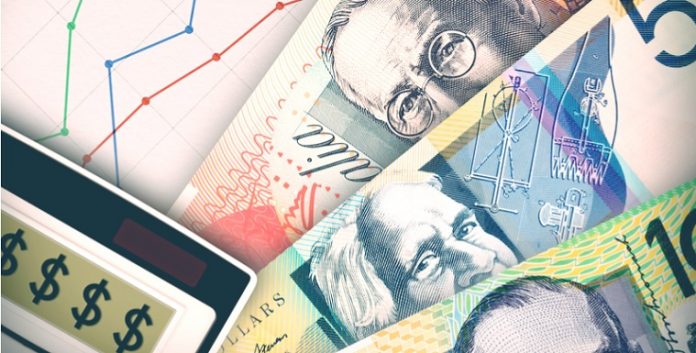- Australian consumer confidence jumps +16.4% in May vs -17.7% in April
- Australian unemployment exp. 8.3%
- Fed Powell says NO to negative interest rates
- AUD/USD +0.1% at US$0.6478 at 15:00 UTC >> Real time exchange rates
The Australian versus Dollar US Dollar exchange rate is falling away from the session high following Federal Reserve Jerome Powell’s speech.
At 15:00 UTC, AUD/USD is trading +0.1% at US$0.6478. This is towards the lower end of the daily traded range of US$0.6451 – US$0.6524. The pair settled on Tuesday -0.3% at US$0.6470.
The Australian Dollar advanced in early trade on Wednesday following upbeat Australian consumer confidence data. The closely monitored Westpac consumer sentiment gauge showed that morale rebounded in May, jumping 16.4% to 88.1, the biggest increase since records began as coronavirus lockdown restrictions eased.
The index had dropped -17.7% in April, in the coronavirus lockdown, which was the biggest decline on record.
Consumer confidence is important because when morale is high, households spend more, which boosts the economy.
Attention will now turn towards the release of Australian unemployment data. Analysts are expecting the unemployment rate to jump to 8.3% in April, up from 5.2% last month. The jobs report is also expected to show that -575,000 jobs were lost in Australian last month. The dismal data could drag on demand for the Australian Dollar, particularly given that the Reserve Bank of Australia monitors the labour market so closely.
The US Dollar is pushing higher following the Federal Reserve Chair Jerome Powell’s live streamed speech. Jerome Powell painted a gloomy picture of the economy. He raised concerns over longer term damage, lower productivity along with other dire projections from the coronavirus crisis.
Mr Powell made it clear that the Fed was willing to do more to help cushion the blow on the US economy. Even with unlimited quantitative easing the Fed may find additional ways to help. However, the head of the central bank was also clear that negative interest rates were not coming. All members of the Federal Reserve have said they do not consider negative rates to be an attractive option.
As a result, the dollar surged. The greenback had been under pressure amid growing speculation that the Fed could take interest rates negative, especially after inflation tumbled -0.8% in April, in its largest drop since the financial crisis.





